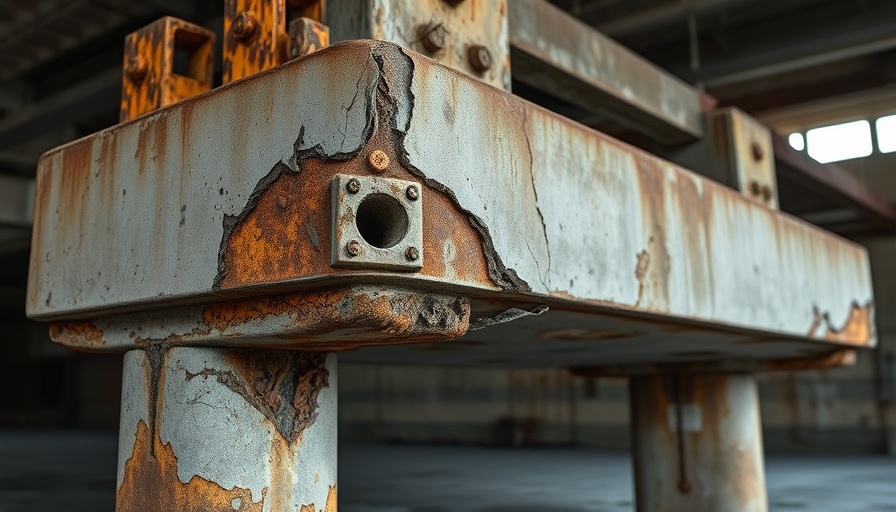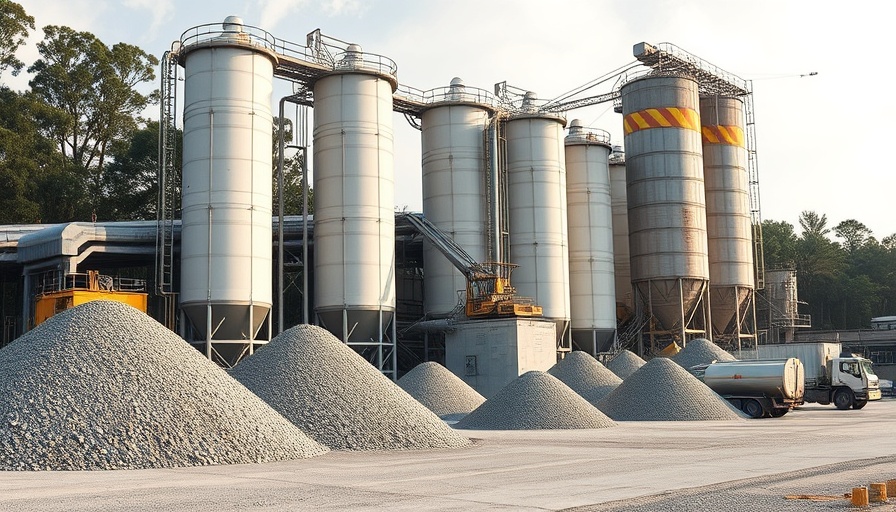
Understanding Concrete Corrosion: An Urgent Concern
Concrete is not only the most utilized construction material globally but also presents an ongoing challenge: corrosion. Every year, over 10 billion tons of concrete are produced, yet its durability remains compromised when exposed to elements that lead to corrosion, particularly in structures reinforced with steel.
Corrosion involves the gradual degradation of materials when they interact with environmental factors, such as moisture and air. For concrete structures, this typically manifests as rust formation around steel reinforcements, causing cracking and deterioration that pose safety risks.
How Admixtures Can Provide Lasting Protection
The silver lining in this narrative is the advent of corrosion-inhibiting admixtures. These are specialized additives developed by manufacturers that serve as a barrier against harmful elements. By integrating these admixtures into concrete, businesses can significantly enhance its resistance to corrosion.
Corrosion inhibitors work by forming an impermeable film on steel surfaces within the concrete. This film serves a dual purpose—preventing moisture and oxygen from reaching the steel and blocking corrosive agents like chlorides from penetrating the surface.
Types of Corrosion Inhibitors: Know Your Options
While the generic term “corrosion inhibitors” covers various compounds, they mainly fall into three categories: organic inhibitors, inorganic inhibitors, and mixed inhibitors.
- Organic Inhibitors: These are carbon-based compounds that bond to steel surfaces, creating a protective layer. They’re known for their effective and eco-friendly performance.
- Inorganic Inhibitors: Usually comprised of inorganic salts, these inhibitors form a passive layer on the steel which acts as a shield against corrosion.
- Mixed Inhibitors: Winning the best of both worlds, these combine both organic and inorganic properties to maximize protection.
Choosing the right type of admixture is crucial for ensuring the long-term integrity of concrete structures, especially for projects with limited maintenance budgets.
The Long-Term Benefits of Investing in Corrosion Prevention
For business owners and property developers, investing in corrosion-resistant technologies can yield significant financial and operational returns. Not only does this approach safeguard structural integrity, but it also minimizes repair costs and enhances overall safety.
Furthermore, using these innovative admixtures promotes sustainability by reducing resource consumption over a building's lifecycle. Detectives of deterioration can lead to earlier-than-necessary repairs and replacements, burdening budgets and the environment unnecessarily.
Final Thoughts: A Call to Action
Concrete corrosion is a pressing concern that can compromise any construction project. However, solutions are available that align with both safety and sustainability goals. As a business owner or facility manager, it's imperative to prioritize the use of corrosion-inhibiting admixtures to extend the service life of your structures while contributing positively to the environment.
Embrace these innovations and make a proactive choice for your next construction project—an investment not just in concrete, but in the future.
 Add Row
Add Row  Add
Add 




 Add Row
Add Row  Add
Add 

Write A Comment